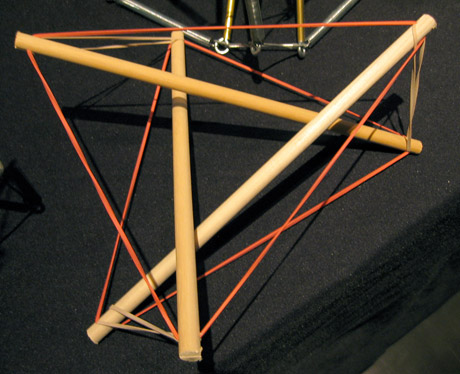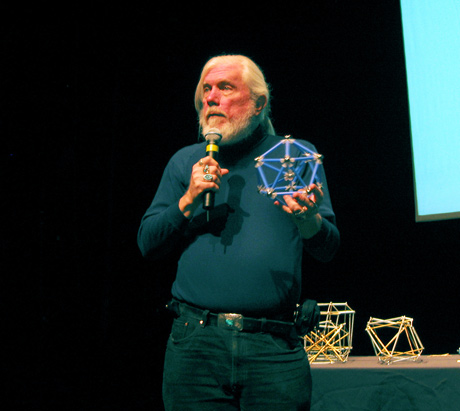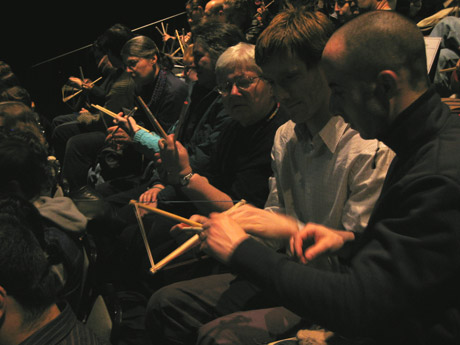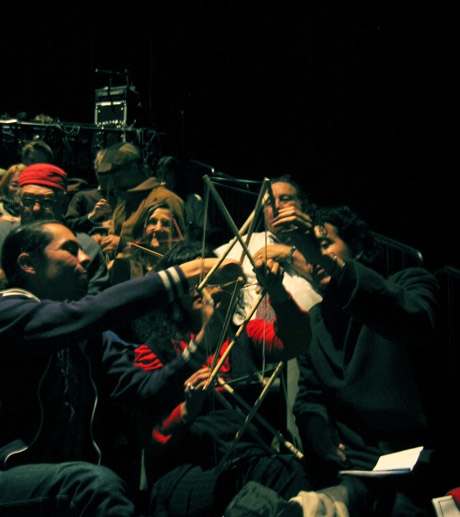Why Things Don’t Fall Down
Date: Monday, 20 November 2006, 7 pm
Location: The Kitchen, 512 W 19th St, New York
FREE. No RSVP necessary

A talk by Robert Connelly, Professor of Mathematics, Cornell University
Presented by Cabinet, the Institute For Figuring, and the Kitchen.
Connelly discussed the history and science of tensegrity, the name coined by Buckminster Fuller to describe structures - most famously, his own geodesic dome - that are held upright not through weight-bearing elements but through a delicate balance of tensions. Since the 1970s, mathematicians have studied these paradoxical structures, such as spiderwebs, cabled roofs, robot arms, and the architecture of living cells, and the underlying question of why things don’t fall down.
About the Participant
Dr. Robert Connelly is an expert on the geometry of rigid and flexible frameworks. A pioneer in the mathematical study of tensegrity structures, Connelly’s other research interest include discrete geometry, distance geometry and the study of packings and coverings. Connelly and his colleague Allen Back have complied a database of super-stable symmetric tensegrities and in 1998 he was part of the team that proved the famous carpenter’s rule conjecture using the idea of an anti-tensegrity. Together with engineer Simon Guest, Dr. Connelly is writing a book about the applications of tensegrity analysis in engineering and architecture.


